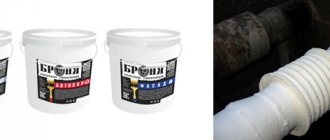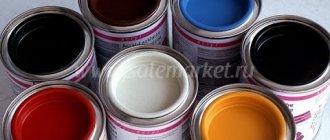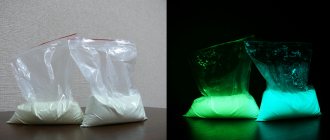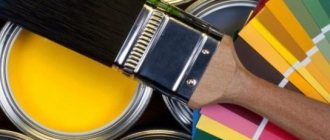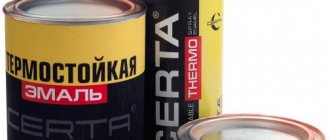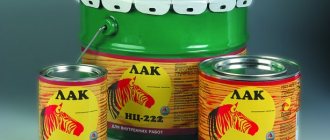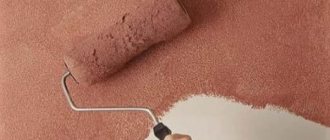What kind of paint is this?
One of the main characteristics of thermochromic paint is that it changes color when exposed to heat or cooling. The idea is that the pigment reacts to the ambient temperature. The sensitivity threshold of a substance mainly depends on the area in which it is used. Most often, this ink is used for printing labels and producing packaging. Moreover, depending on the current temperature, the image will either disappear or appear.
Method of use
The main thing to consider when mixing paint is what effect you want to get in the end. For example, with regard to oil and water bases, then it is worth adding from 5 to 30% of the main component, but if the paint is applied under pressure, then no more than 5%. In this regard, before starting production of a series, it is in any case worth testing the equipment and checking how high-quality the effect is in the end.
Printing with thermochromic inks is extremely simple and inexpensive, yet the effect is memorable. And if you carry out all the protective manipulations with an additional layer of coating, the image will be durable and reliable.
Characteristics and composition of thermochromic paint
The paint is made from powder of special thermochromic microcapsules. They are round in shape and range in size from three to ten micrometers. The color pigments contained in the paint can be presented either in the form of liquid crystals or in the form of leuco dyes. The reactive element itself can be mixed with various solutions. For example, with acrylic, rubber or oil-based paints. The proportion of the active substance, as a rule, ranges from five to thirty percent of the total mass of the finished product. This figure depends on the required result.
Types of paint
There are two main types of heat-sensitive pigment:
1. Reversible paints. They acquire a different color at a certain temperature. When it changes in the opposite direction, the pigment returns to its original shade. That is, this is a reversible color transformation.
2. Irreversible paints. They do not have such a feature. When the temperature changes again, the original shade is not restored. That is, the pigment can only transform color once.
The most popular, of course, are reversible thermochromic paints. They are most often used in medicine to control the sterilization of surgical instruments. Additionally, phosphorescent pigment can be added to the paint.
Types of Heat Sensitive Pigments
Based on the way they change color, pigments that react to temperature can be divided into three types:
- Initially invisible. Usually, when heated to 50-60 degrees, they turn a certain color. For example, black, red, blue or green. After cooling, the pigment becomes colorless again.
- Initially visible. When a certain temperature is reached (from 7 to 60 degrees), the color becomes transparent. That is, it is not visible, but after that the pigment comes back. Typically, such heat-sensitive inks are used for offset and screen printing.
- Multi-colored pigment. One shade changes to another and back again. Such coloring agents are used when an encrypted message or image needs to be applied to the packaging. It only appears when heated or cooled.
Application [ edit | edit code ]
Thermal paints were developed to determine the temperature on the surface of products of arbitrary shape, including the surface of moving objects (for example, a workpiece when cutting on a lathe, or a milling cutter). Thermal paints have found wide [2] application in temperature studies of various objects.
Benefits [ edit | edit code]
Advantages of thermal paints over various types of thermometers:
- the ability to measure the temperature of arbitrarily curved surfaces
- obtaining a temperature field (or isotherm) rather than individual point measurements
- lack of heat dissipation through wires (for example, thermistors)
- ease of remote reading of the temperature of objects (for example, those under high voltage)
Accuracy [edit | edit code]
The accuracy of measuring temperature with thermochemical paint is ± 5...10 ° C, although the passport for each specific batch of paint may indicate a more precise transition temperature and greater accuracy.
Impact of temperature
Paints that are classified as returnable paints return their pigment to its original state after the end of heat or cold. Moreover, each type of enamel has its own characteristic temperature activation. The permissible spread is from - 15 to + 70 degrees Celsius.
Let's consider which temperature regime is suitable for certain cases:
- Up to +20 degrees. Used for applying paint to containers intended for soft drinks.
- From +29 to +31 degrees. In this temperature range there are surfaces that change color under the influence of body temperature (in contact with the skin). This effect is widely used for advertising purposes, in magazines, on booklets or T-shirts.
- More than +43 degrees. This temperature is used for products that will interact with high temperatures. Most often, printing is done on mugs and other utensils for hot drinks. In this case, the color changing effect serves both a decorative and warning function.
The highest exposure temperature can be 280 degrees Celsius. But experts recommend treating surfaces at lower temperatures (about 230 degrees). This is especially necessary if heat-sensitive materials such as textiles or plastic are used.
Application
- Dishes (mugs and bottles for hot and cold drinks made of glass or ceramics. By putting such a bottle in the refrigerator, it is very easy, without touching it, to determine by color how much it has cooled and is ready for use).
- Clothing (printed T-shirts).
- Magazines.
- Promotional materials.
- Children's products (for example, toys intended for bathing, as a child's entertainment, or dishes with which it is convenient to determine the temperature of the liquid poured into it).
- Protection for packaging (on pharmaceutical or cosmetic products, in this area non-returnable heat-resistant substances are used).
Color palette
The shade range that is used for heat-sensitive pigments is quite wide. The most popular colors are: red, blue, pink, cyan, yellow, green, orange, purple, black and brown. If different types of substances are used, the pigment changes not into one, but into several colors depending on the intensity of exposure to temperature.
Areas of use
Returnable thermochromic paints are used more widely than their “disposable” counterparts. These materials have gained great popularity among car owners who want to make their car original in its external design.
Covering for cars
Heat-sensitive paint is a godsend for those who like to experiment and take a creative approach to car care. Everyone can create a new interesting image for their iron horse with their own hands, because working with paint that changes color is not difficult. It can even be applied with a regular paint brush or roller, although the best option for painting a car body is, of course, a paint sprayer.
Thermochromic material can not only be a highlight of the decor, but also have an important practical function: if, when heated, the car’s coating begins to turn white or another light shade, then in hot weather the body will be able to reflect the sun’s rays and the surface of the car will overheat less.
To create a complex visual effect, you can use the following technique: paint the car in several layers of thermal paint, using compositions with different temperature thresholds. How to remove old paint from a wall at home? Drawings made using a stencil or applied by hand (if you have the makings of an artist) will help add “magic.”
Paints that change color depending on temperature? A car, for the design of which heat-sensitive paints were expertly used, simply cannot go unnoticed in the stream of other cars!
While you rejoice at the opportunity to decorate your vehicle, you should still know that thermochromic paint also has some disadvantages:
- low light resistance: in order to protect the car body coating from the destructive effects of ultraviolet radiation, you will have to apply a layer of special varnish and equip the parking area with a canopy (the best option is a garage);
- in case of mechanical damage, a complete repainting of the car will be required;
- difficulties when registering a car that does not have a permanent color;
- heat-sensitive paint is an expensive material.
Dishes that change color
A tea or coffee mug, on the surface of which a funny inscription or design appears when a hot drink gets into it, is a good memorable gift. An appetizer dish with an emerging pattern is an interesting detail in table setting. Paint that changes color depending on temperature for painting?
And a variety of baby dishes that give a visual signal when porridge or milk is too hot is a useful thing in the everyday life of young mothers.
Important: thermochromic paints do not contain toxic substances, and dishes painted using these materials are safe for health.
Cloth
The textile industry also uses compounds that change color depending on temperature. So, a plain T-shirt worn on the body can surprise you with the fashionable print that appears, and a stylish pattern or label will appear on your jeans.
Souvenirs and decorative elements
In this industry, there is an unusually wide scope for the use of thermochromic materials: Christmas tree decorations and garlands, other holiday paraphernalia, original lamps and candlesticks, key rings, gift stationery, etc. The great thing is that you can do and paint a lot of things yourself, for example, draw a picture or create a panel with a “secret”.
Scope of application
There are several main practical tasks for paint that changes color depending on temperature:
- Inscriptions and pictures that appear during cooling or heating may indicate a violation of storage conditions during prolonged exposure to temperature.
- The heat-sensitive pigment is a way to protect against counterfeiting. For example, a hidden word appears on a document passed through a photocopier.
- A certain color applied to the label can be an indicator of the optimal temperature for consuming drinks and other food products.
Pigments that react to cold or heat are most popular in the food industry. An image covered with such paint is placed on the labels. It informs you whether the product has reached the required temperature while in the oven or refrigerator. Thermochromic enamel is also used by manufacturers of alcoholic beverages and beer products. Labels, bottles, stickers and other attributes indicate whether the drink is cool enough. Thermochromic paint has also been used in other industries. It is used to make ceramic dishes (glasses, cups, plates). The pigment is used in various types of plastic, silicone rubber and other materials for extrusion, injection molding, flexography, silk-screen printing, screen and offset printing.
Usage
Basically, such paint is applied to textiles or ceramics, less often to plastic and glass items, and very rarely to paper. Recently, it has also become possible to apply thermochromic paint to cars. This not only improves the appearance of the car, but also reduces the heating of the metal on hot summer days. In addition, this is an ideal option for those who like a dark car color, but do not want the interior to overheat in the summer.
The most popular option using thermochromic paint is the design on ceramic and glass mugs. Almost every man at least once in his life was given such a dish where, when pouring hot drinks, part of the image disappeared or appeared. This development has also found its application in clothing. In addition to interesting decorative and gift options, such things can warn of freezing or increased body temperature. Similar patterns are also applied to workwear.
Thermochromic paint has also found its application in the production of goods for children. For example, there are warning signs on dishes and bath toys that tell you what the temperature of food or water is. Many drinks that are meant to be enjoyed chilled are also marked with this ink. They can be applied both to bottles and cans themselves, and to labels.
Another advantage that thermochromic paint has is price. It is quite low, taking into account the properties of this material (1,500 rubles for a 25-gram jar, which lasts for a long time). Such solutions attract customers and are an excellent advertising ploy. Fashion magazines and advertising literature also often use paint that changes color at different temperatures. Another area of application of thermochromic dyes is the creation of protective elements on medicines and cosmetics.
Application of heat-sensitive enamel
The coloring pigment can be applied to various surfaces in various ways: using a brush, sponge, roller or spray gun. That is, the principles of application are no different from coating with conventional enamel. The highest quality results with minimal product consumption and uniform coverage can only be achieved when working with a sprayer. However, this method requires some skills and is most often used by professionals.
As a rule, 65 milliliters of thermochromic enamel is enough for about a square meter of surface. But the final consumption will depend on the required color saturation. If the pigmented product is applied to non-absorbent materials (for example, for printing on mugs), then it is recommended to dilute it with water-dispersion varnish or any acrylic emulsion. In this case, after this the paint must be given a few minutes to dry. You can also reduce the waiting time by using a jet of hot air.
It should be noted that thermal paint has a weak level of UV protection. Therefore, it is recommended to additionally use varnish, which will protect the coating and increase the service life of the painted layers.
Sheetfed printing is also worth mentioning. Since such pigments have low intensity, they should be applied to a good layer of paint. To increase the thickness of the substrate, the image is printed in several passes. Neutral white media are most often used. They allow you to achieve maximum color contrast. For this reason, it is not recommended to use paper with a grayish or yellowish undertone for offset thermochromic printing.
Hydrochromic paint
Hydroenamel changes color when water comes into contact with it, which is logical to assume from the name. The composition of this paint and varnish material includes microgranules, which, when dry, give the paint its normal color. However, when exposed to water, the solid color turns into transparent, and then, as if by magic, the color of the paint applied underneath, under the hydroenamel, will appear underneath.
Hydrochromic enamel does not contain toxic substances and is safe for human health and the environment.
This option for painting a car gives less room for imagination and activity than painting using thermochromic enamels, which will be discussed below. However, some car owners, not without success, resort to this method of painting - hydroenamel, as an option, is applied to certain areas of the body, masking patterns that will become visible when water gets on the car.
Lightfastness of thermal paint
It should be noted that thermochromic enamels are extremely sensitive to ultraviolet radiation. Practice shows that due to sunlight, the product loses all its properties in just a week. Moreover, the paint is negatively affected by external factors. For these reasons, experts recommend applying a layer of protective UV varnish over the thermochromic pigment (especially for outdoor use). This will significantly extend the life of the product.
Storing paint that changes color
For the reasons described above, it is recommended to store thermal paint away from direct sunlight. Otherwise, it will lose its ability to change color. The ideal place for storage would be a dark and dry room. It is also worth considering that the shelf life of high-quality heat-sensitive enamel is only two months. After this, the paint begins to transform into a gel-like substance, which is no longer suitable for its intended use.
Despite its interesting and unusual properties, thermochromic paint has not become widespread. One of the main reasons for this is the rather high price and specificity of use. In some cases, this is a complicated application technology. We can only hope that in the future the situation will change and unique dyes will become more accessible to the population.
Recommendations
It is not advisable to store thermochromic materials in direct sunlight, as the paint may lose its color-changing ability. It must be taken into account that the shelf life of thermochromic paint does not exceed two months, after which gelation occurs.
The service life of heat-resistant enamel will increase if a top coating is used during application - a UV-protective varnish.
Before launching the serial production of applied materials, you need to conduct production tests yourself, with your own hands, since the final effect depends on many factors and can be different, so when testing you will have the opportunity to adjust the temperature, mixing proportions and shade.
